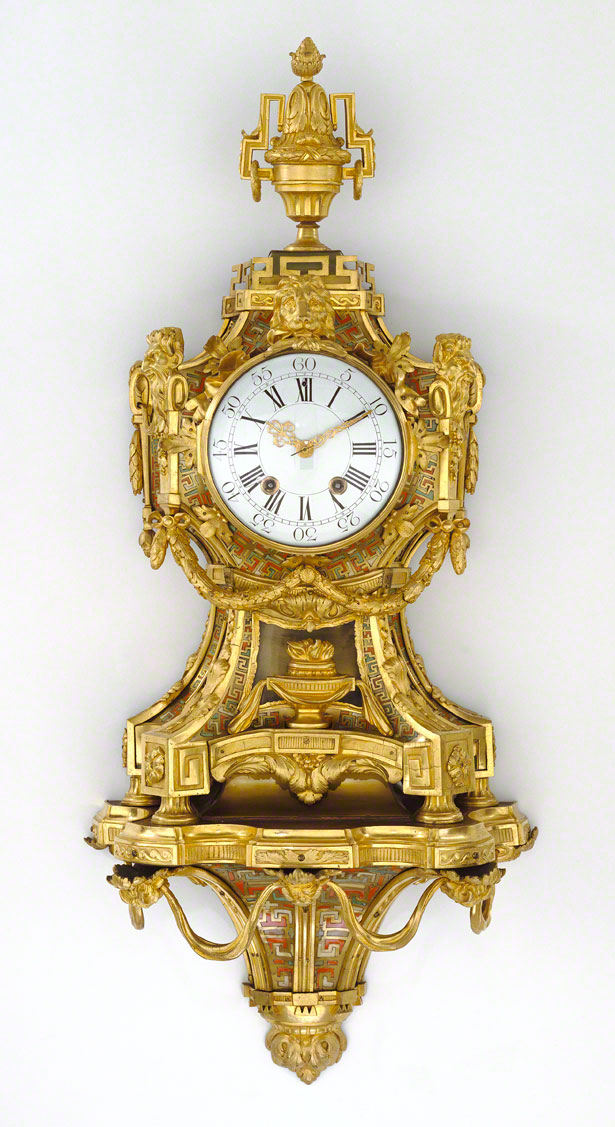
Wall Clock (Pendule d'alcove), about 1740, movement by Charles Voisin, clockmaker; clock case made at the Chantilly Porcelain Manufactory. Soft-paste porcelain; gilt bronze; enameled metal; glass. 2 ft. 5 1/2 in. high. The J. Paul Getty Museum, 81.DB.81
Daylight savings time ended yesterday morning, prompting the punctually minded to wheel the hands of their analog clocks back one hour. No such fussing is needed for the clocks in the Museum’s collection, which hold court in the Getty Center’s South Pavilion along with the furniture, paneled rooms, tapestries, and other treasures from our decorative arts collection.
That’s because, for these clocks, time stands eternally still. Their delicate mechanisms would be damaged by perpetual movement, so their hands remain fixed—meaning they tell time correctly only twice a day. And for most of these clocks, that time is 10:10 (give or take a few).
Why 10:10? This placement of hands is widely agreed to be “the perfect display time for a clock,” according to Charissa Bremer-David, our expert in French decorative arts. “If you look at advertisements, from Timex to Rolex, the clock hands are usually at 10 after 10.” This time not only displays the hands to best advantage (and highlights the clockmaker’s logo), but actually makes it seem like the clock is smiling. Which I like to think our clocks really do, when you take a minute to admire them.

Wall Clock, about 1710, attributed to André-Charles Boulle. Gilt bronze veneered with blue painted horn and brass; enameled metal; glass. 2 ft. 4 in. high. The J. Paul Getty Museum, 73.DB.74


















